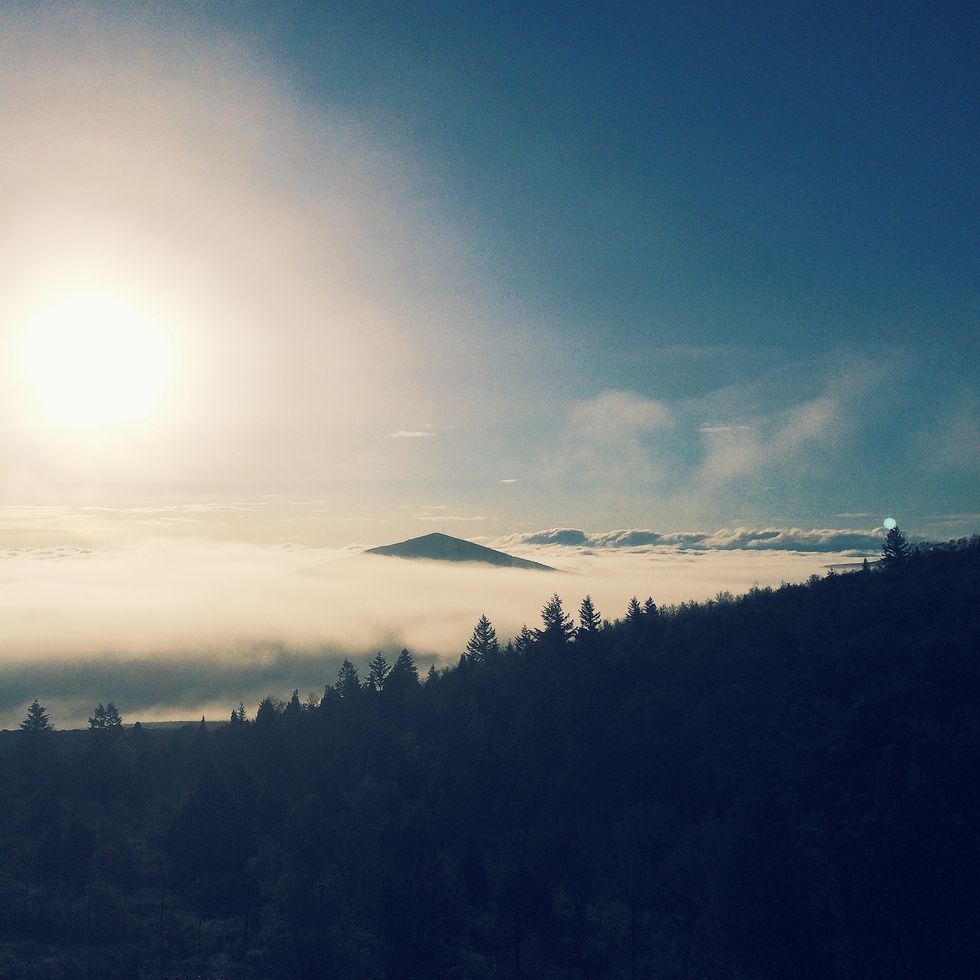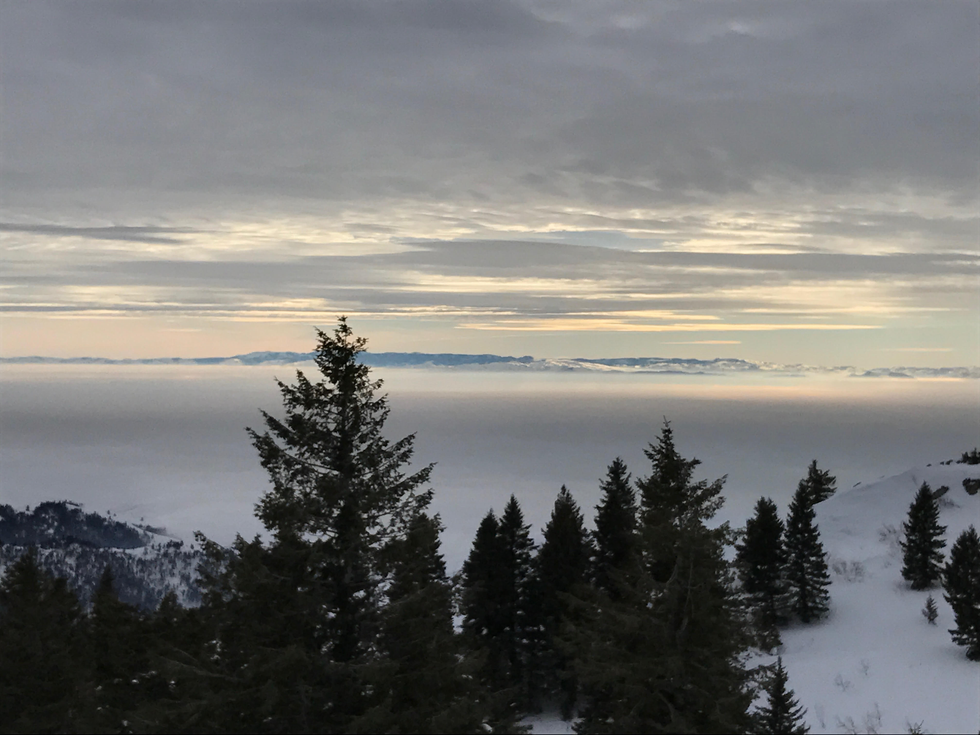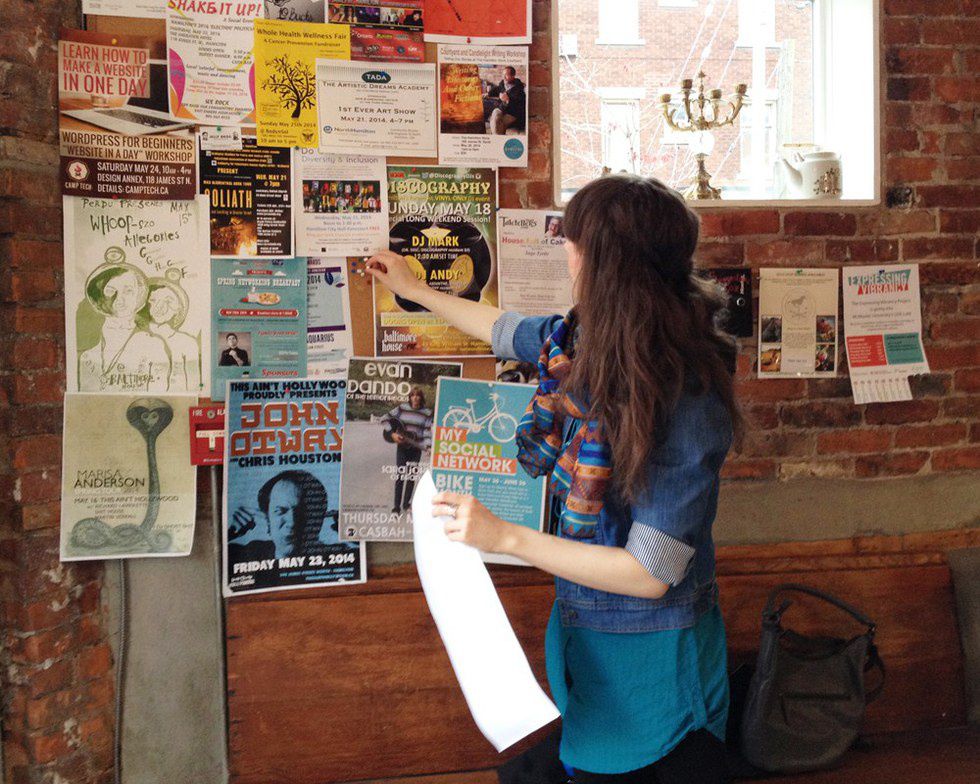Every winter residents of Boise, Idaho start complaining about the shorter days, colder nights, snow, icy roads, and of course: inversions. Inversions are well known in this area as citizens see this almost every day from Thanksgiving all the way to Valentine’s Day. But why do these even happen?
Simply put, an inversion is a layer of air that has increasing temperatures with higher altitudes (height). Geographically speaking, mountainous areas with large valleys are associated with inversions worldwide. An inversion creates cold air at the bottom of the valley in Boise, for example, and warmer air stays towards the top, or up at Bogus Basin.
These temperature inversions happen nearly every day, but go unnoticed to most since it mixes out and there’s no fog or smoke trapped within the inversion, as these typically disperse by early morning.
However, some of these inversions last up to a week or even longer.
This is because the Treasure Valley has two main inversions: The temperature inversion mentioned above, and a more common nocturnal radiational inversion. As the name implies the latter inversion develops at night during calm and clear skies that allow the ground surface to radiate its heat up towards space much faster than the layer of air above the surface. The temperature inversion happens when a warm front, typically from the south, overruns the cold air in the valley.
View of an inversion from Bogus Basin.
So here’s a typical inversion scenario: an atmospheric arctic front brings cold air and snow to the valley; skies become clear after the snowstorm leading to warmer air above, but at night temperature cools and reaches dew point to form fog; then the sun's light angle during winter is too low to burn off the fog during the day; thus, the next night will have an inversion that’s worse than the night before, creating more fog and cooler temperatures.
Exacerbating fog and cooler temperatures aren’t the only thing being trapped, though, as particulate pollution gets trapped as well. This means car emissions (by far the most polluting), industry and fire smoke from yard burnings and woodstoves in homes all get trapped in the lower atmosphere. Breathing this in creates health risks, especially to those with asthma, bronchitis and other lung diseases.
Whatsmore, these pollutants aggravate heart conditions, including congestive heart failure and coronary artery disease by passing through the cardiovascular system. There are more susceptible age groups to these symptoms as elders are at higher risk, and as children are developing they play outdoors and breathe more rapidly, inhaling more particulate matter with lower body weights.
So for lack of better terms, inversions suck. Cold gloomy days that involve inhaling particulate pollution isn’t fun for anyone, but if you’re up at Bogus Basin things aren’t so bad. If you’re a skier or snowboarder temperatures are mild and the sun is shining up on the mountain. And when you gaze out over the Treasure Valley all you see is a sea of clouds that paint a majestic view of the valley.
So if you don’t want anything to do with inversions I advise taking a trip up the mountain to shred the slopes or drink some brews at the lodge. Or just stay inside and Netflix and chill.


















